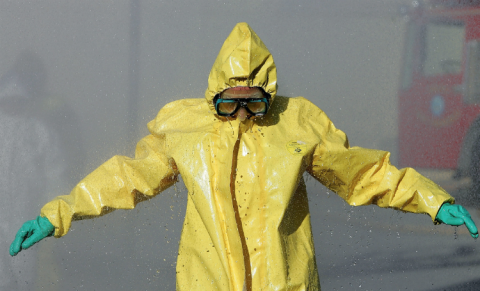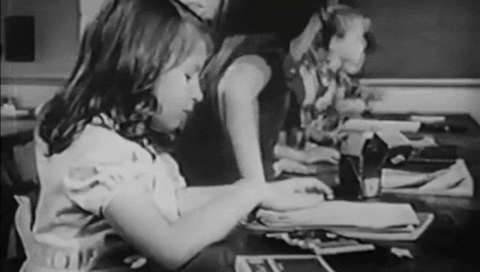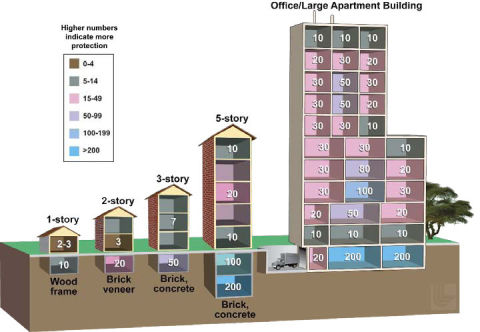Dress Rehearsal for Armageddon: How Cities Plan for a Nuclear Attack
By Andrew Karam
Then everyone takes their turn talking. The police
will discuss how they intend to secure the city, getting people to
safety, keeping them out of areas that are dangerously radioactive, and
trying to maintain civil order. The fire department is going to have
fires to put out, people to rescue, and will begin setting up
decontamination stations.
But the nature of nuclear
attacks makes these daunting tasks even more difficult. For example, the
Health Department might need to figure out exactly where the winds have
taken the plume, so it won’t be safe for anyone
to be outside, including first responders. If you’re caught in the
plume’s centerline, the area where the fallout is most dangerous, you’re
going to get a fatal dose of radiation in a matter of minutes. So now
both Fire and Police know that they can’t immediately spring into
action. Instead, they have to wait for the plume to settle out before
they can start the evacuation.
The initial plume is only a
small part of the problem. In close proximity to a 5 kT bomb, virtually
every building within about a half-mile radius will collapse, shattered
by the force of the explosion, and create rubble as much as 100 feet
deep. Meanwhile, many areas will be remain engulfed in flame. In
Hiroshima, this ensuing mass fire was as deadly as the radiation.
So during the TTX, those
around the table will go through the plans to see how their agency can
respond – and to see if they can help to make things better (or at least
help keep them from getting worse). They look for holes in the plans –
what do we need to do that hasn’t been address? What have we been
assigned that we just can’t do? Do we have the equipment, personnel, and
training to carry out our responsibilities? And are we doing everything
we can to keep the public and the emergency responders safe?
The result of these
exercises is usually a lot of sober faces sitting around a table.
Knowing that in real life these decisions could affect the lives of
millions of people. It’s a sobering experience, and when talking with
others, you quickly learn that they feel the same way.
The Execution
Once the local, state and
federal representatives step in, and the plan is analyzed from every
conceivable angle, it’s time for the last step—boots-on-the-ground
exercises.
Every so often you’ll hear about nuclear terrorism exercises in Virginia Beach or New York City. Although conspiracy theorists may dream up more sinister motives,
these tests are absolutely necessary. Until this moment, all the
experts have really done is to write and talk by people who haven’t been
in the field for years. Now is the time to put workers into their
protective clothing, give them radiation meters, set up decon stations,
and do everything else we can to prepare for the worst.
This is the penultimate
test—with the ultimate test being something you hope you never have to
do. Field personnel make sure they can find their equipment, operate it
under realistic conditions, and answer minuscule but deadly important
questions like if the switches on a radiation meter are too small to
operate in protective gear and if we can really set up a decon tent in only 2 hours.
If everything goes
smoothly, then the next step is making the plan better, faster, and as
flexible as possible. If the opposite is true, then it’s back to the
step one, this time armed with many lessons learned.
All this seems like a flurry of planning that can come together over a few weeks, but sometimes this process can take years
to accomplish. One plan I personally worked on took over five years to
hash out, another two years to set up a series of TTX exercises, and few
more to revise the plan. After all, these agencies do lots of other important things every day, but nuclear preparedness scenarios continue to be conducted across the country
The Survival Strategy
It goes without saying
that a nuclear attack is a horrific circumstance, but it can be survived
at distances of less than a mile from ground zero, depending on the
strength of the explosion. Of course, there are a lots of variables, but
you shouldn’t assume that a nuclear attack means instant and
unavoidable death.
Strangely, fleeing also
isn’t necessarily your best option. If you see a bright flash and
mushroom cloud and turn to run the other way, half an hour later you
might sustain a lethal dose of radiation—all depending on which way the
wind is blowing.
The very best thing you
can do is go into the nearest stable building and stay there until
you’re told it’s safe to leave. That might be in a few hours (if the
plume went in another direction) or it might not be for a few days. But
unless you’re a radiation safety professional with your own instruments,
you have no way of knowing if it’s safe to go outside or even know
which direction to evacuate. Remember, vehicles offer no protection, so you’ve got to be in a building—the larger the better.
Once inside, stay toward
the center of the building because fallout can still expose through
walls. So the further from the exterior walls you’re staying, the lower
the radiation dose will be. Stay on a lower floor or in the basement,
and fallout that would kill you in a matter of hours can be easily
survived if you find the right shelter.
You’re also going to be in
dire need of uncontaminated food and water. You can fill the bathtub
(if you think of it), take water from the toilet tank, drink whatever
you have in your refrigerator as well as any bottled liquids you might
have in the basement or garage. But most people can survive for a few
days without drinking at all, and even longer on a relatively minimal
amount of water. So you don’t need to keep a month of water on hand at
all times.
The Navy has a saying that
“failing to plan is planning to fail.” Although a nuclear attack
remains unlikely, it’s a deadly serious possibility where the right
information can save your life. It’s a plan you hope to never have to
use, but one that’s undeniably necessary.



